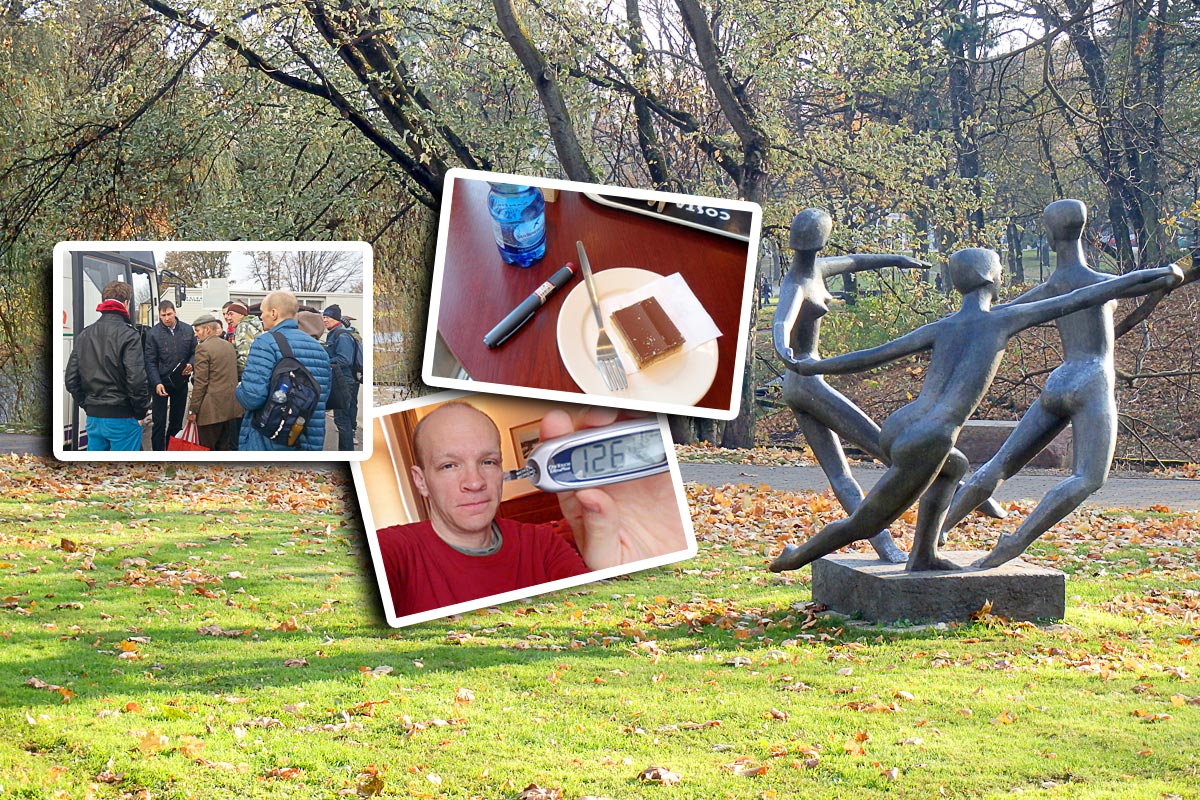
For a Type 1 diabetic, traveling to Latvia can be fun and complication-free with just a little preparation and the right attitude. Latvia is a modern country, and shouldn’t present any trouble to the diabetic traveler.
I’ve had diabetes for over thirty years, and I spent six days backpacking through Latvia. I learned about the food, about insulin doses, and about how to adjust my shots for the schedule and the exercise I had in the country. I checked my blood glucose (BG) often, made some good and some bad decisions, and generally had a great time.
If you want to travel to Latvia with diabetes, read this simple guide to what to see and how to handle diabetes in this wonderful Baltic country stuck culturally halfway between Scandinavia and Russia!
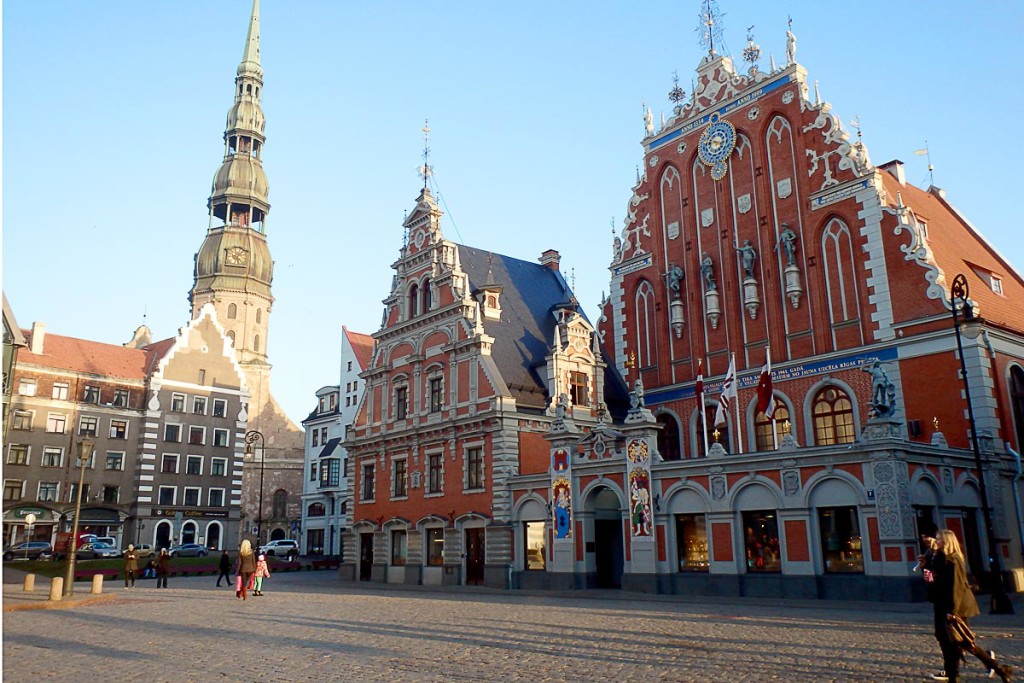
Stunning Old Town Rīga, Latvia.
How to speak Latvian – for T1Ds
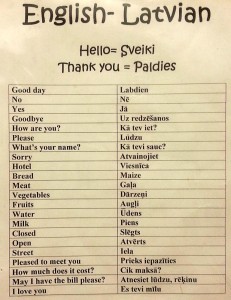
A sign hanging in Rīga Hostel. Not diabetes-related, but helpful!
If you need to actually say diabetes in the Latvian language, the word is diabēts. It’s pronounced something like “dee a bets”.
The entire phrase “Type 1 diabetes” is rendered in Latvian as 1. tipa cukura diabēts, pronounced “vee ents teepa tsukura dee-a-bets”.
If you are in some emergency situation involving diabetes and health professionals, you will get by fine. It shouldn’t be too hard for them to find someone who can speak decent English, and you can just say diabēts and hold up one finger for “Type 1”; they’ll get the picture and take care of you accordingly. But honestly, I can’t imagine any of this being necessary if you watch your BG carefully anyway. Being diabetic as a traveler in Latvia isn’t more perilous than being a diabetic at home.
You should, at any rate, wear a bracelet, necklace, or anklet indicating that you’re diabetic, or at least keep cards in your wallet that you can show people.
“I have Type 1 diabetes” – Man ir 1. tipa cukura diabēts.
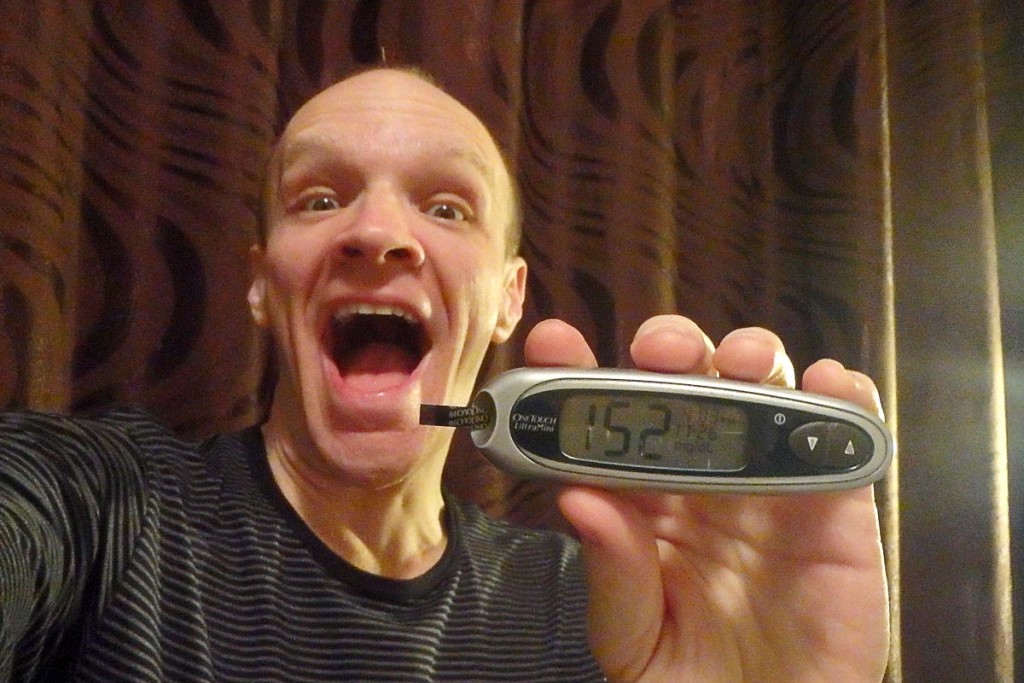
Traveling in Latvia as a Type 1 diabetic
Latvia is a small country, stuck between Estonia to its north and Lithuania to its south. The capital, Rīga, is the largest city and the hub around which all travel centers. There are shops and kiosks all over, as in most European countries, so deciding on a favorite low BG snack and then consistently locating it is easy. I used juice and various types of cookies that I always carried with me.
Buses are more reliable and numerous than trains, so you’ll probably be in for some lengthy bus rides while traveling around Latvia. Carry enough snacks and food to last the journey. Buses do stop for a while at some stations and you can jump out and go shopping for some quick supplies, but don’t count on it because it’s hard to know when that might happen.
Latvian food in Rīga has everything you need – American fast food, international cuisines like Japanese sushi, pizza (spelled pica), and everything else. Food in smaller towns tends to the Russian side of things – bread and potatoes and meat. Supermarkets and shops and cafés are usually not too hard to find, although even in bigger towns it can be hard to find things open at night. Again, be sure to stock up on low BG snacks and other things you’ll need when you get the chance.
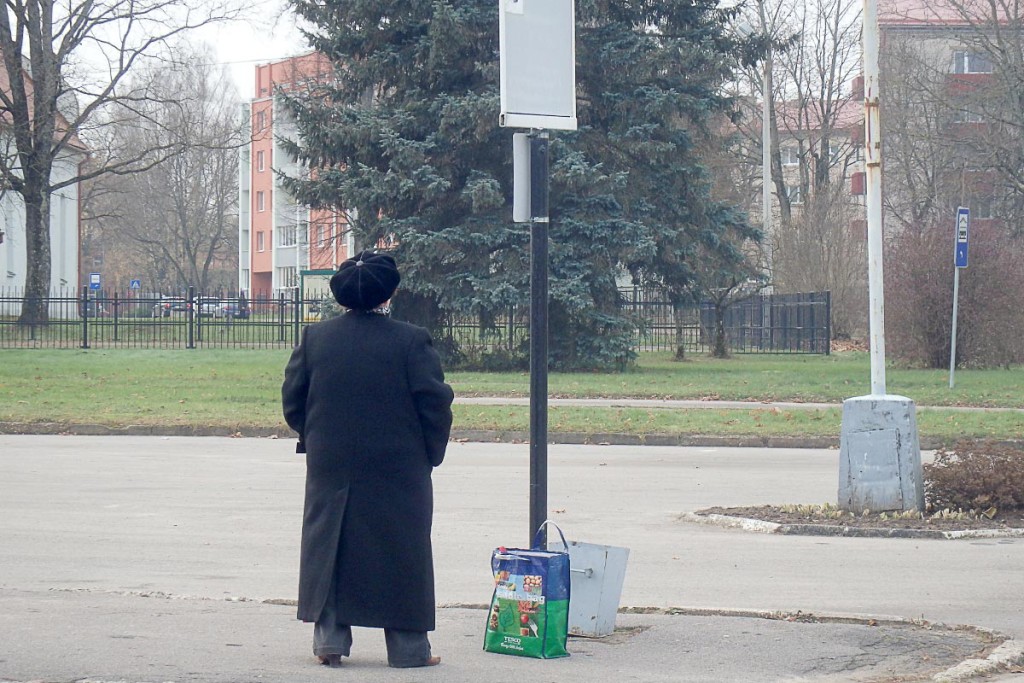
Looking for Latvia? Just follow this woman.
My route in Latvia
I crossed into Valka on the Estonian border by bus from Tartu, Estonia. In fact, the international border runs through Valka; the Estonian half of the town is called Valga. You can walk back and forth across the border all you want; there is a guard shack but no guard anymore.
After one night in Valka I took a bus to the capital Rīga and its UNESCO World Heritage Old Town area. After a few days there, I went by bus to the wonderfully named town of Daugavpils, near the Belorussian border. Daugavpils has a lot of Russian culture and people, and it’s a lovely little town with its own tram system.
After Daugavpils I headed for Lithuania.
Latvian food
When traveling in Latvia, foods you buy packaged from a store will probably have nutrition info on them. It may or may not include an English version but you should be able to figure it out. Make sure you understand the package size and the portion size when calculating carbs.
For food with no label (restaurants, food stalls, etc) you’ll have to guess. My advice is to guess high; I was often plagued by high blood glucose levels in Latvia until I learned that most things were thicker than I assumed and needed more insulin than I was injecting. As long as you check your BG often, especially after unknown meals and doses of insulin, you’ll be able to experiment until you get it right.
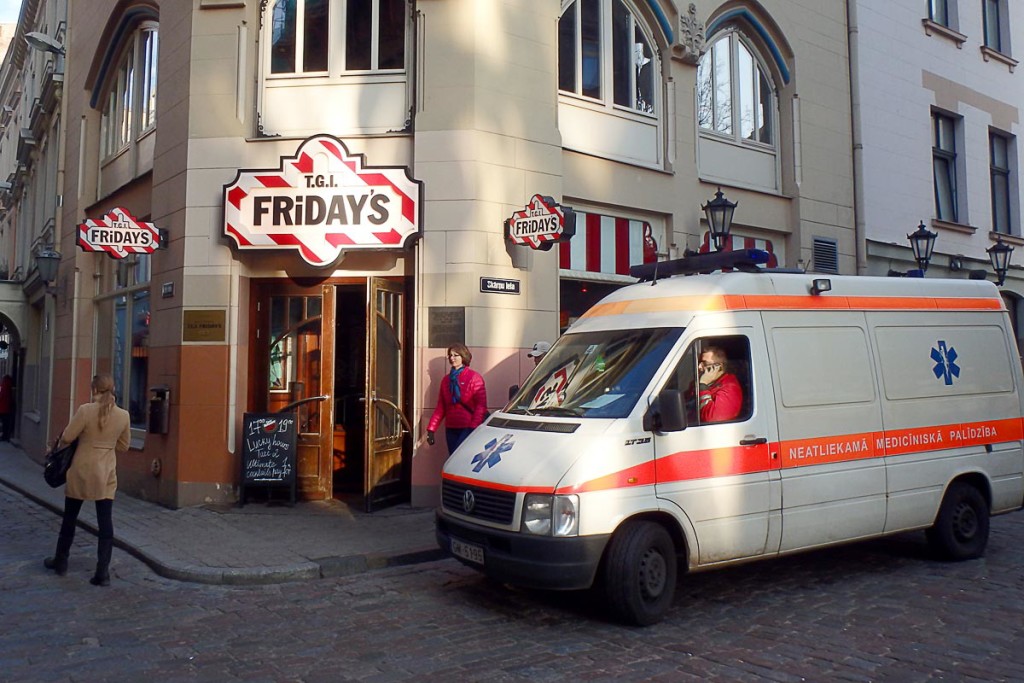
TGI Friday’s with its very own ambulance in Old Town Rīga.
Some of my food experiences in Latvia, and the effects it had on my blood sugar, were:
- Maxima snack lunch – In tiny Valka, I was stuck on a Sunday with almost nothing open. Lunch came from the local Maxima, a very small “super” market near my hotel. It was pizza bread with orange-chocolate cookies and chocolate milk. My BG was high before I even started eating at 217. Afterwards, despite my Humalog shot, it was 263. The junkier the food, the worse the effects on BG. I recommend rounding up on those insulin doses for food like this. (But always check to verify later.)
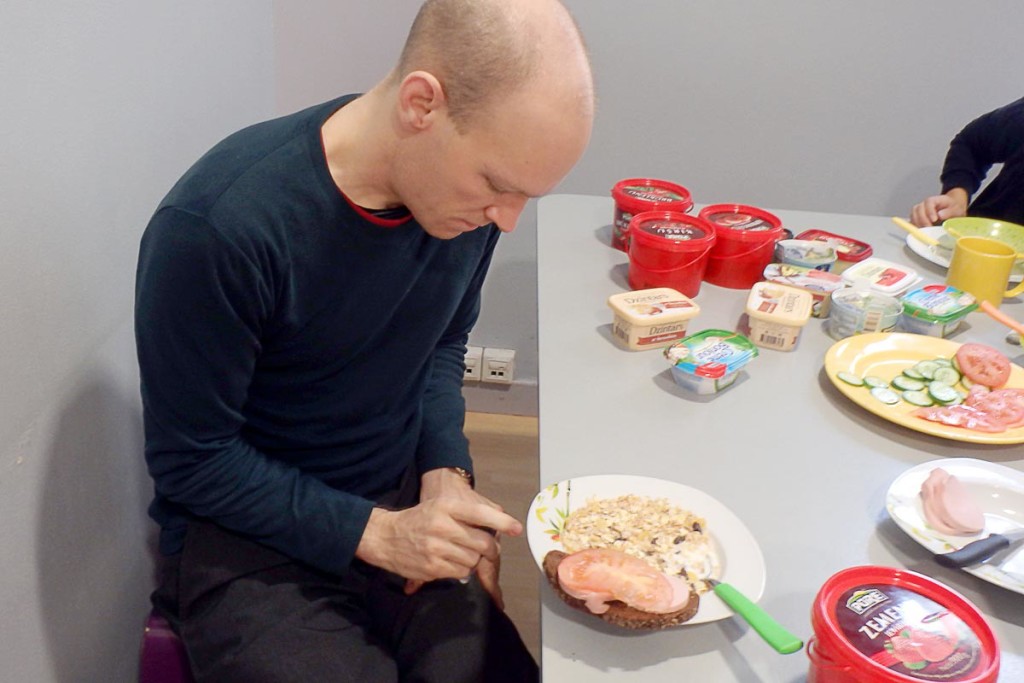
Humalog shot at the breakfast table, Rīga Hostel.
- Breakfast buffets – Staying in guesthouses with cheap or free breakfast buffets is what I mostly did in Latvia. It’s economical and nutritious, and if you eat enough you can skip lunch or have a small snack. Unfortunately, I had trouble figuring out how to dose for these egg, yogurt, juice, ham, cereal, bread, sausage, etc breakfasts. Rolls are pretty dense and high in carbs, and jam and yogurt can be surprisingly sweet. I say eat what you want, do your best to add up everything, and adjust each day. Incidentally here’s how I did with breakfasts in Latvia:
Day 12 in Valka: 126 before, 239 after.
Day 13 in Rīga: 198 before, 290 after.
Day 14 in Rīga: 64 before, 183 after.
Day 15 in Daugavpils: 155 before, 199 after.
Day 16 in Daugavpils: 164 before, 362 after.
So I got slowly better each day, until the last when I crossed over into Lithuania by bus and ended up very high. Lesson learned: always respect the breakfast buffet carbohydrate counts.
Note about taking insulin in public: I can’t, in good conscience, recommend it, but I always injected Humalog through my Bluff Works pants into my legs. Bluff Works pants are great for traveling, because they feel good, are super strong, and you can get insulin and blood on them and it will wash right out later, and they’ll be instantly dry.
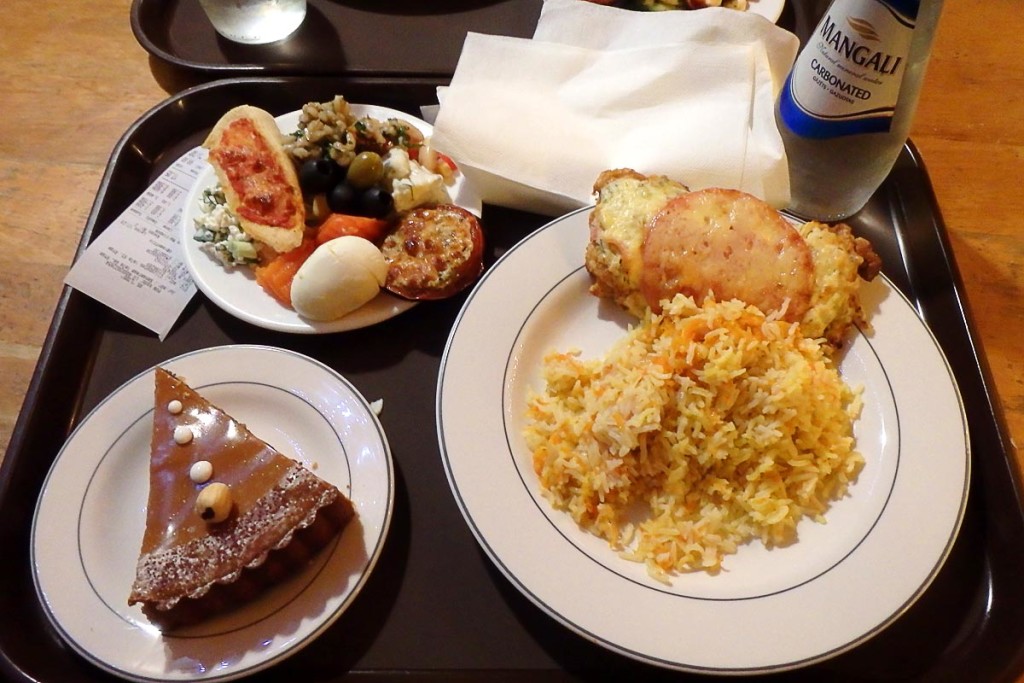
Buffet at Lido Vērmanītis in Rīga, cheap and filling. And high in carbs.
- Lido Vērmanītis – The capital city Rīga has almost any kind of food you could want. On our first night there we went to this buffet place, where you take the dishes you want and the cashier just adds up everything on your tray. It was cheap(ish) and filling; I had rice, fish covered in cheese, salad, chocolate cake, and sparkling water. BG before was 253; afterwards it was 289. Be careful with rice and cake.
- Cake and water – Angry at being 290 after breakfast one day in Rīga, I stopped by a cafe to get some cake, just to have an excuse to take some Humalog. (I don’t like to take Humalog without eating, if I can help it.) I got some sparkling water with it, too. A couple hours later I was 103. A triumph! Figuring out the dose is everything. The food you may naturally be drawn to while traveling (filling and nourishing) might be higher in carbs than you think. Dose well and check often.
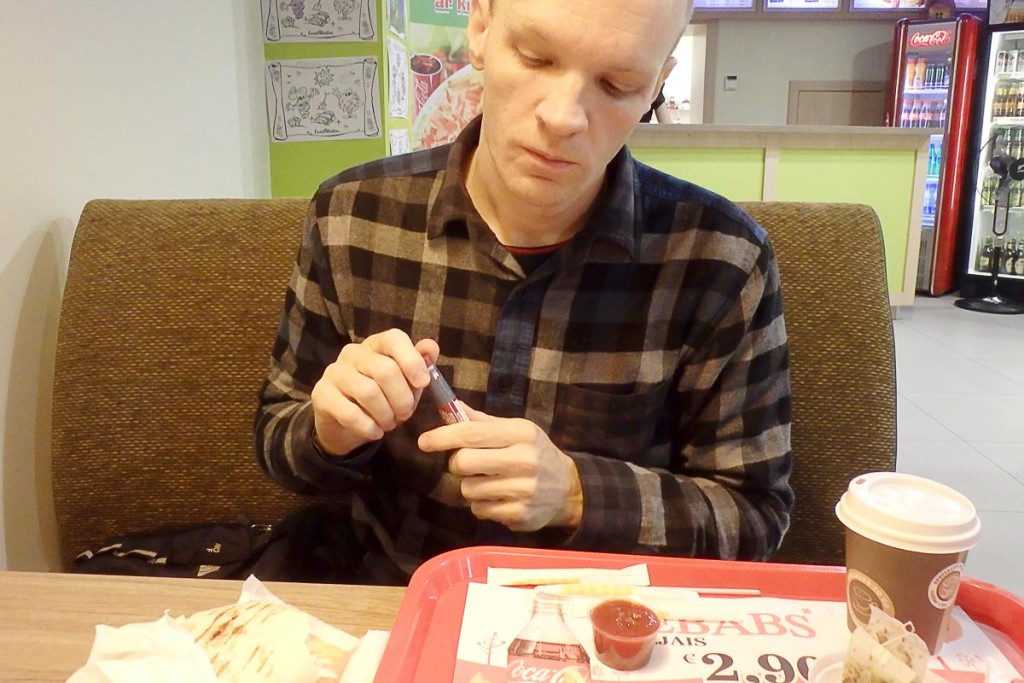
How do you calculate a Humalog dose for cūkgaļas…?
- Cūkgaļas – I ordered this at random from a Latvian-only menu in a fast food place because I liked the name. (It’s pronounced something like “tsook gall yoss”.) It turned out to be a pork sandwich pocket with fries. I guessed the carbs and shot up. On the way home I stopped at a Rimi supermarket and got a beer and a doughnut, taking more Humalog for them in my hostel. Stacking up shots and food like this is very tricky and a recipe for disaster; sure enough, I must have guessed both shots incorrectly: It was 337 afterwards. Ouch.
- Sandwich and chips – On a bus from Rīga to Daugavpils, I had to bring my lunch with me: a sandwich and chips from a small kiosk (plus water). I was 183 before and 196 afterwards. Not terrible, but could be better, for such a high-carb meal. (The carb info was on the packages, so I’m not sure why it didn’t end up closer to 100. Body was too used to being high I guess.)
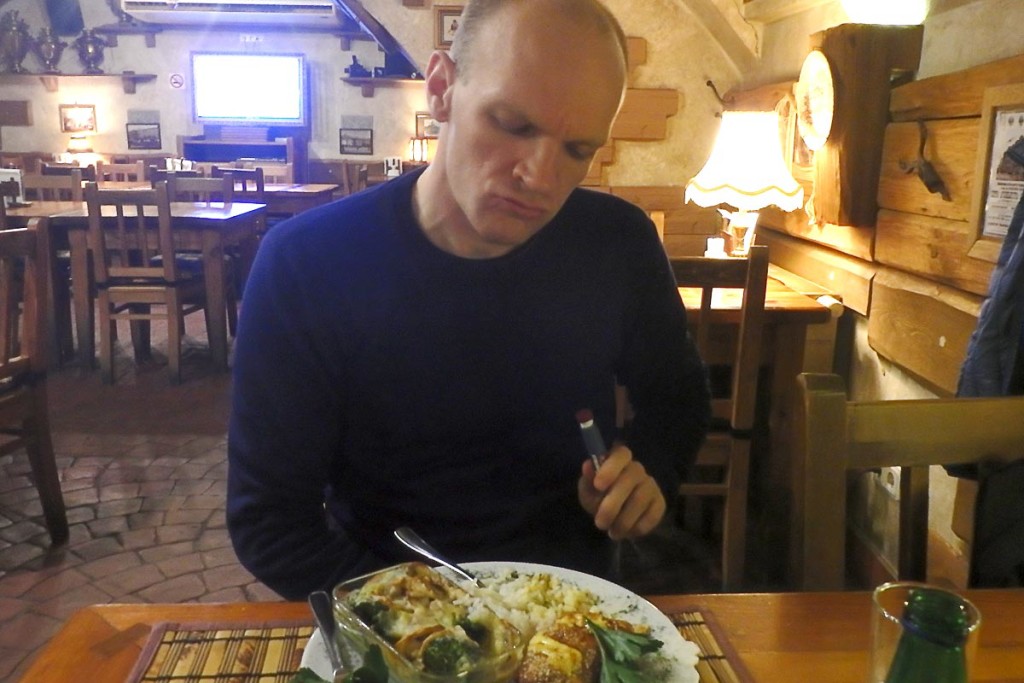
Contemplating the heavy rice and bread meal at Gubernators in Daugavpils, Latvia. BG was fine after all this, thanks to my adequate Humalog dose.
- Free bread at Gubernators – Gubernators was one of the only restaurants open in the town of Daugavpils one night, and Masayo and I stopped in; my BG was 196. The food was great; I had a stuffed cabbage with tons of rice. Big carbs, and the meal came with free bread. Gulp! Out of exasperation from my recent high BGs, I took a large Humalog shot for my Gubernators meal. Afterwards: 153. Success! Humalog can do anything if you take enough.
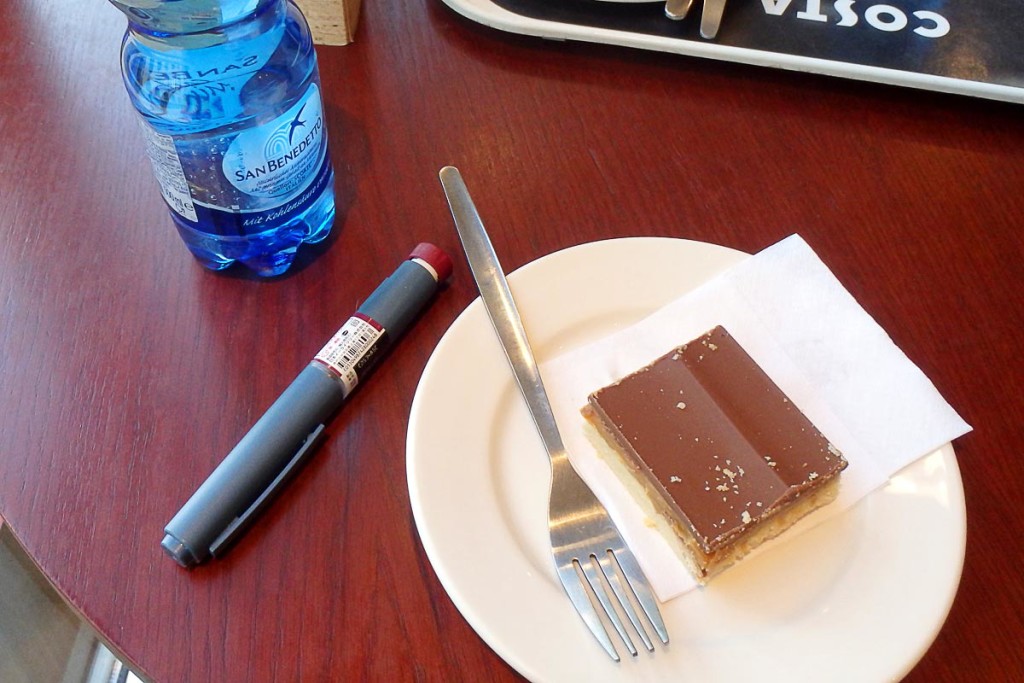
- Afternoon cake – After walking around the fortress in Daugavpils all day, I was 209 when we stopped at a cafe in town for some cake. Mindful of being high a lot lately, I took six units of Humalog and ended up at 70 afterwards. You may overdo it sometimes, but you slowly but surely learn.
- Pizza – Oh, pizza. Easy to find and eat most anywhere. But much higher in carbs than I thought: one night some pizza in Daugavpils sent my BG up to 363. It probably had twice the carbs I thought it did.
Rooms and accommodation in Latvia
There are plenty of guesthouses, cheap hotels and hostels, and similar places to stay all over Latvia. I used booking.com to reserve my rooms there because it’s so easy to find exactly what you want in your price range. You can also select things like free breakfast, bicycle rental (or free use), etc. I highly recommend it.
A sampling of accommodation in Latvia based on my experiences:
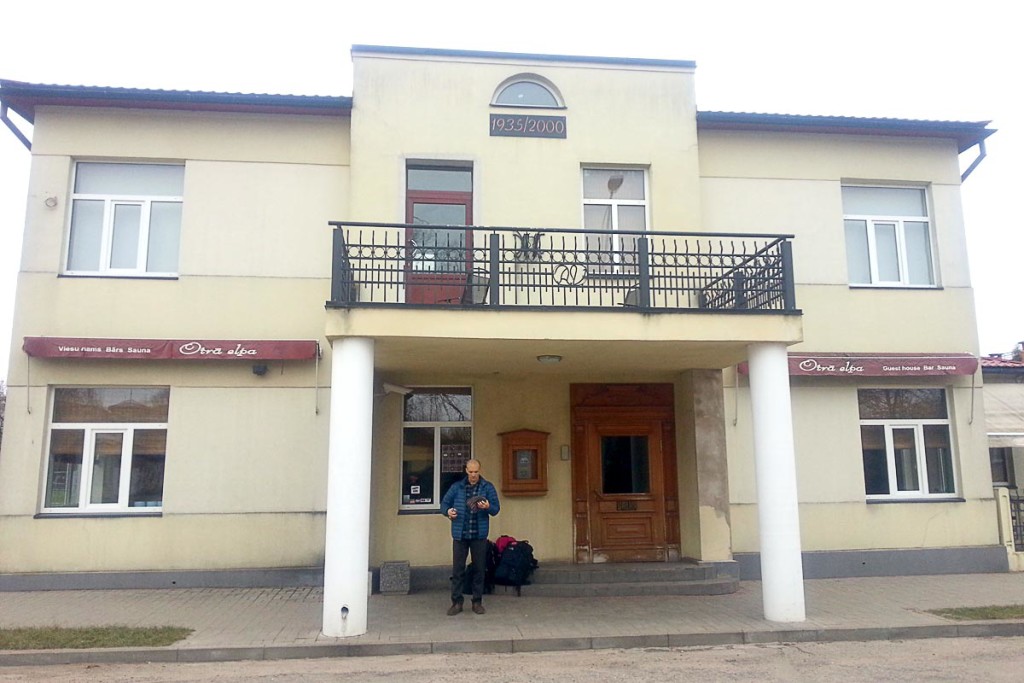
- Otrā Elpa – This is a small hotel in tiny Valka on the Estonian border in the north of Latvia. I stayed here on a Sunday night. The place was totally shut down and dark when we arrived; I called a woman on the phone outside the building who spoke English and came to let us in. She gave me a special key to open not only my room, but the hotel itself since nobody was staffing it. It was nice though; our room was quiet and comfortable and had wifi. The breakfast buffet in the morning was great, and put out just for us. (Curiously, someone was staying in the next room; we could hear the TV and some moving around, but we never saw them. Guests? Long-term tenants? I enjoyed imagining that it was some Russian mafia, lying low in this tiny town.)
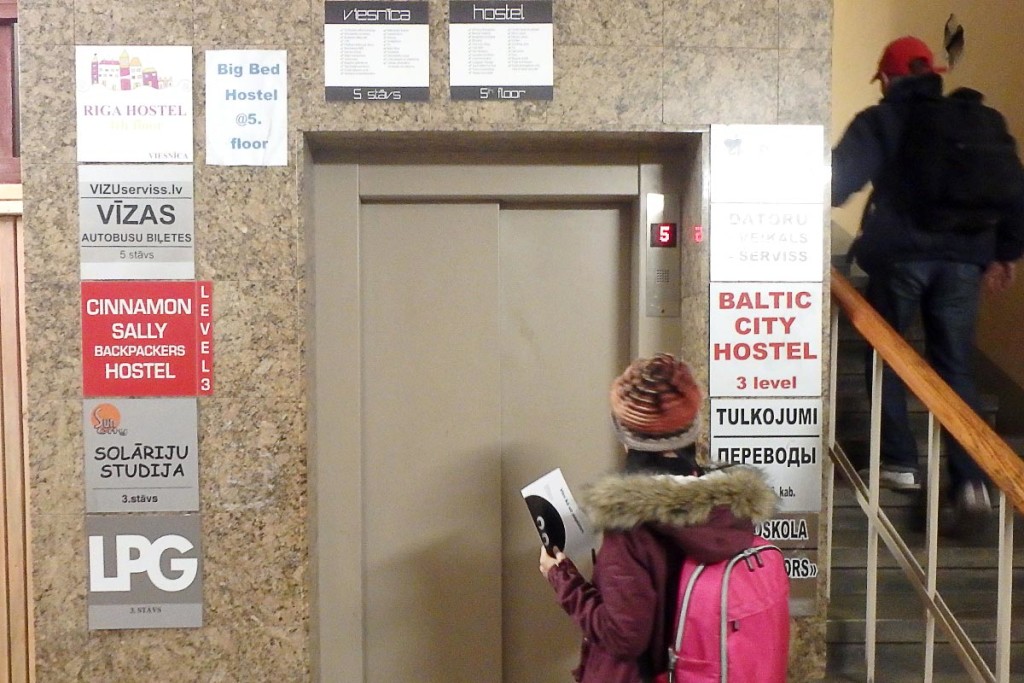
Elevator full of hostels in Rīga.
- Rīga Hostel – Dull name (and maybe not unique), we stayed here two nights. We got the private room but with shared bathrooms and showers; there are also the usual bunk bed dorm rooms for those really looking to save money. Rīga Hostel is typical of hostels – international people lounging around in the common room all day to rest or to save money on long-term backpacking treks, use of a kitchen with free coffee and tea all day, and a simple breakfast buffet which fills you up. Plus the chance to meet others. It was grungy but quite nice for us. And we met and spoke with other travelers, including a guy from China who brewed tea from back home for us in his special travel tea-making kit. Rīga Hostel is centrally located, up a little elevator over a McDonald’s right near Old Town.
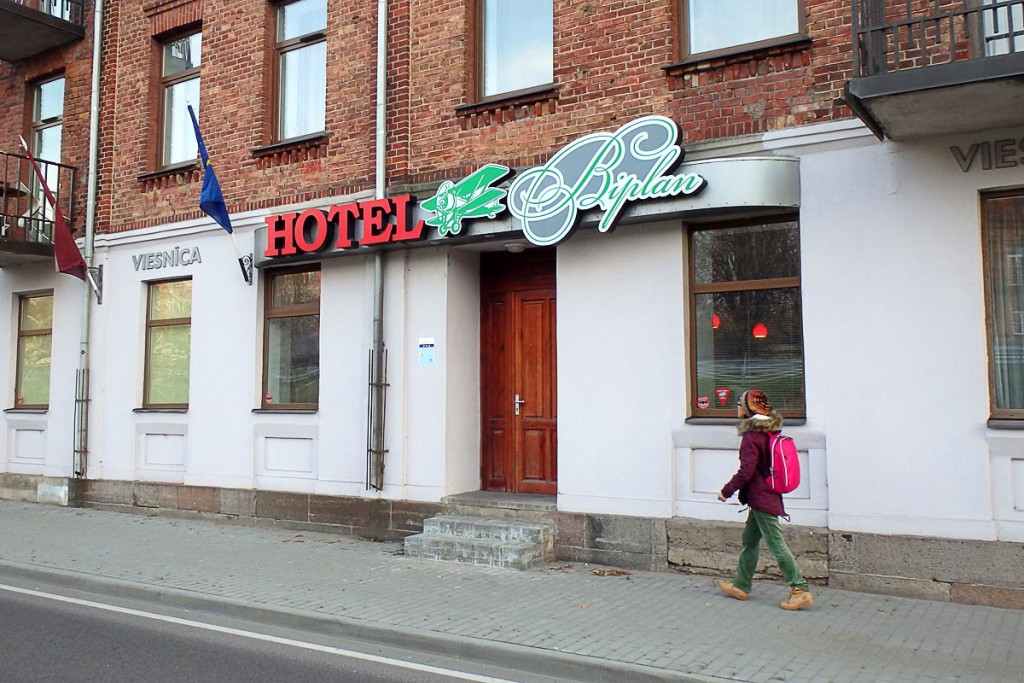
Cute Hotel Biplan, on a quiet back street. Fantastic breakfast buffet.
- Hotel Biplan – A lovely little hotel on the edge of Daugavpils in the Russian southeastern corner of Latvia, with a kind of “golden age of airplanes” theme. There weren’t many other guests here, if any, but the place was open and staffed. It’s a bit of a walk from everything but Daugavpils is small anyway, and a tram stop is right across the road to get you around town. The breakfast buffet was particularly extensive and tasty. On our last morning they set it all out an hour early for us. I’d definitely stay here again.
Some hotels and guesthouses have refrigerators in the rooms, or somewhere on the property you can use to store your insulin if you wish. In my experience, as long as insulin is kept reasonably cool, there will be no problem. However, when you do have the use of a refrigerator, why not take advantage of it? Just remember not to leave your insulin behind when you check out. (Yes I have done that before. Talk about flexible travel plans – you’ll have to retrace your steps and fetch it!)
Things to see in Latvia
Some of the highlights of my time in Latvia included these sights – of course, your trip will be your own and you will hopefully find new, exciting things that will be near and dear to your memory forever.
- Valka – The town of Valka sits right on the Estonian border. There isn’t much to the town itself; there’s a nice church and some interesting buildings on its quiet little streets. But the fun is walking back and forth across the border. A guard shack still stands, but is no longer manned. I stayed at a hotel in Valka, Latvia, and had dinner at a hamburger place in Valga, Estonia (the town has a different name on either side of the line). A black cat was the only thing on the border checking my credentials as I strode from one country into another.
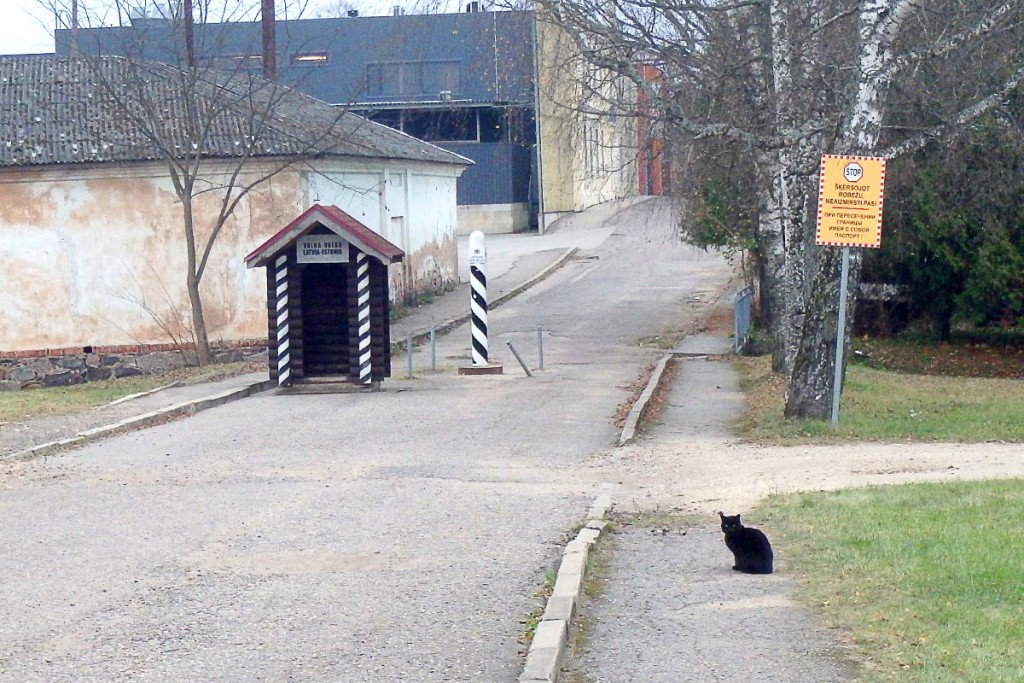
Cat guarding the Latvia-Estonia border.
- Old Town Rīga – The Historic Center of Rīga, as it’s known to UNESCO, is a large section of Rīga, easily accessible from all points. Full of grand statues and façades, ancient buildings of all sizes and shapes, quiet back alleys full of curious shops, and enhanced with fanciful Latvian decoration everywhere, this is a wondrous place to wander around for a day or two. A small river runs through a park on the edge of Old Town, where ducks, accordionists, and strolling lovers cheerfully pass the time.
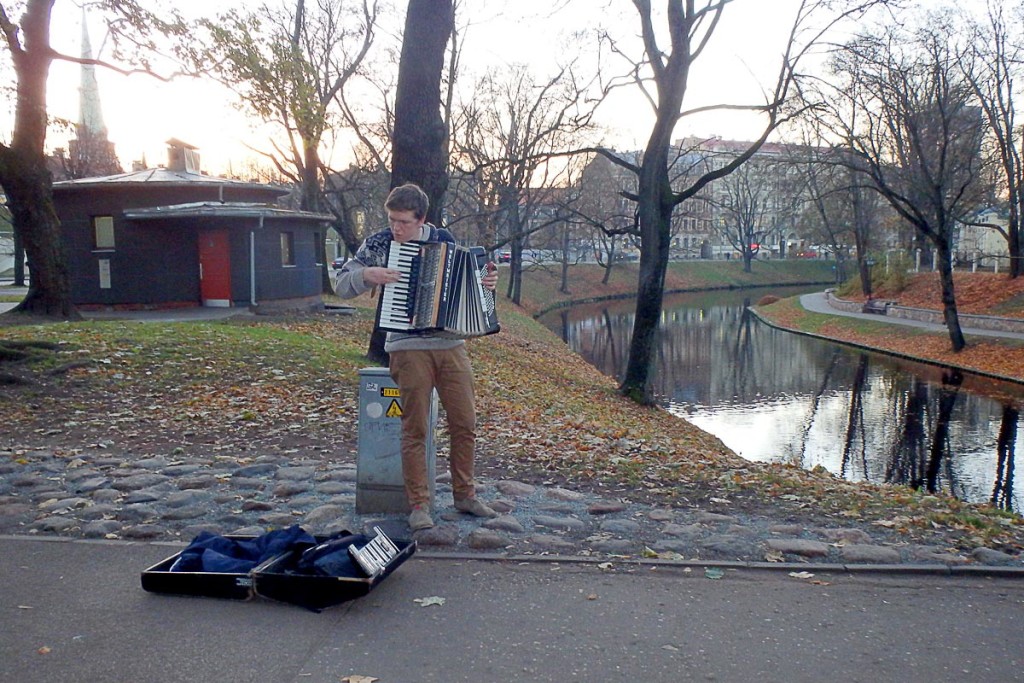
Music in Old Town Rīga.
- Cietoksnis – A Russian fortress from the 1800s near the town of Daugavpils, and pronounced “tsee eh toak sniss”. This curious collection of wide streets and big rectangular buildings has a forgotten, abandoned sense to it – but apparently some people live in some of the hollow-looking buildings, and cars occasionally pass by through streets with new, modern street signs on them. It’s a lot like Patarei Prison in Estonia, without the horror and art displays. It’s just serene, but unnervingly so, because it raises so many questions… like what exactly is this place? You have to take a Daugavpils tram to the last stop, then walk to the fortress. Near the entrance is the Mark Rothko museum; the artist was born in Daugavpils when Latvia was part of Russia.
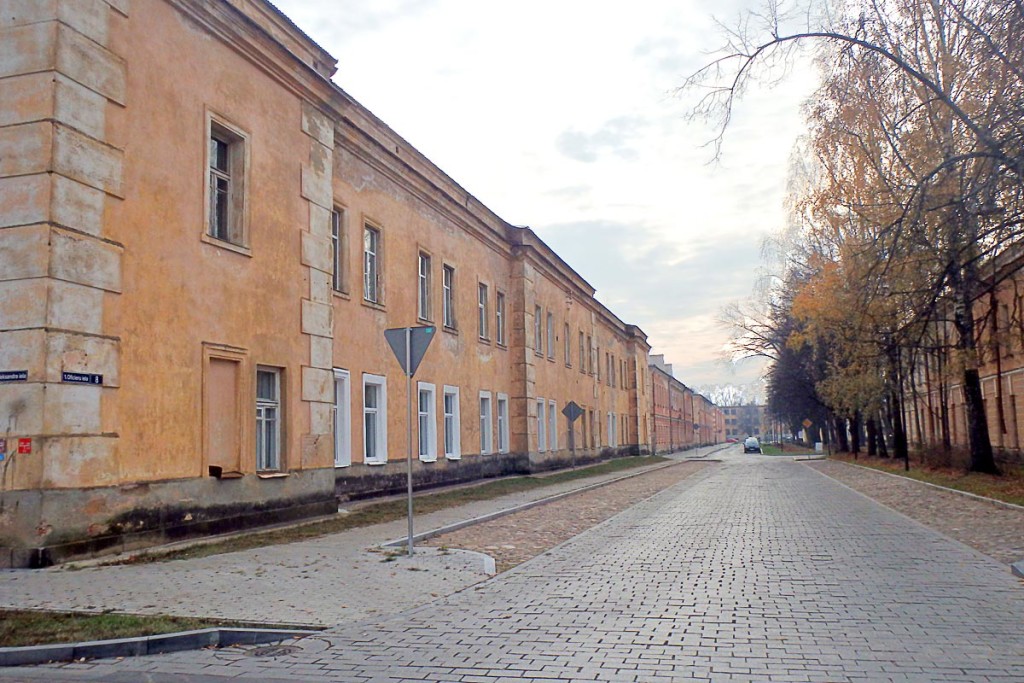
Inside the Russian fortress of Cietoksnis – now strong-looking, empty-looking buildings with an uncertain future. Wander among them while you can.
- The Hill of Churches – Also on the tram lines of Daugavpils is the so-called Hill of Churches, several places of worship scattered on a hill overlooking the town. They range in size and style, but each one is very individualistic and retains its own feel. Walking between and among them is a mesmerizing trip into a kind of magical setting.
Blood sugar control in Latvia
You sit down at a meal in a small Latvian restaurant, having ordered something at random from the non-English menu. It arrives, and looks great, but how many carbs does it have? How much insulin do I need for this?
The answer is: who knows? Guess, and see what happens.
That’s about all you can do when traveling in Latvia with diabetes. I found that the foods I was eating had more carbs than I guessed, and I was high quite a few times. It started to get better when I increased my Humalog doses, unit by unit. New foods continued to throw me off but it did improve noticeably during my several days in Latvia.
One day I even managed all BGs under 200!
When choosing food in Latvia, don’t err on the side of “safety” too much. Obviously I’m not a medical professional, but spiritually and philosophically speaking, avoiding something you want to eat because you’re afraid of what it will do to your BG is unnecessary and not desired. Live your life.
The key to traveling in Latvia with diabetes is to check your blood sugar often. At least 4-5 times a day, many more if you feel you should. Knowing your BG is key to enjoying your trip and really experiencing Latvia. Try not to get upset when it’s 40, or when it’s 350. Not too upset, anyway!
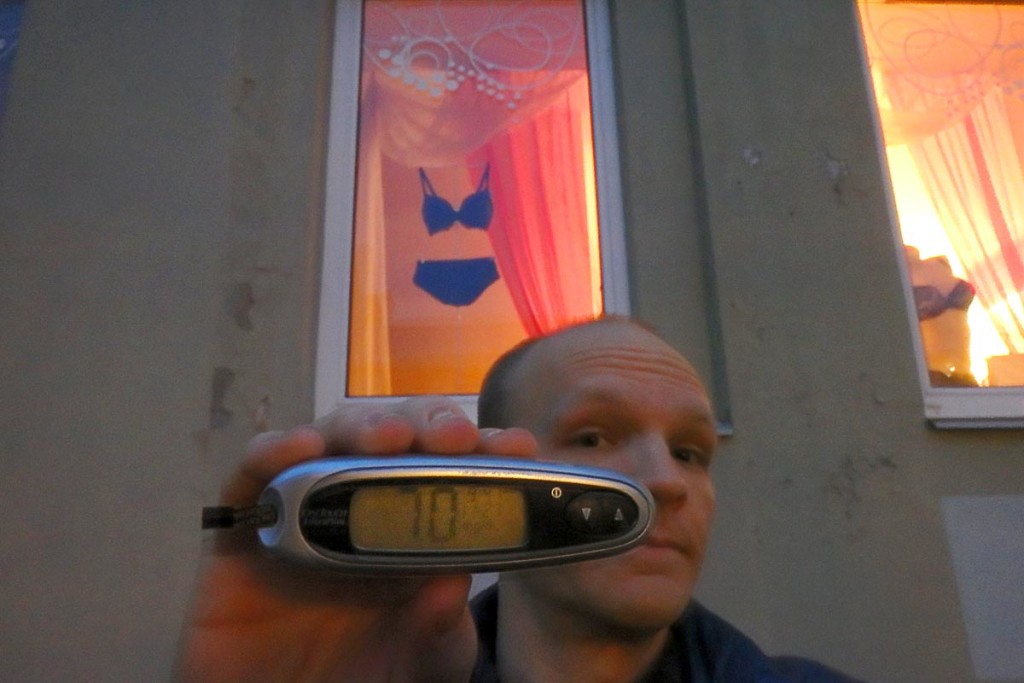
A bit low by the lingerie shop in Daugavpils.
My Latvian blood glucose stats
I kept a thorough record of all my BG checks in Latvia. The stats aren’t great, but the important things are that:
- BG control improved the longer I stayed in Latvia, and
- I did and ate what I wanted, and didn’t shy away from food or experiences.
Here are my overall blood sugar stats for my time in Latvia:
- Total number of BG checks: 19
- Average BG: 201
- Lowest BG: 64
- Highest BG: 363
- Average morning BGs (~12:00): 141
- Average afternoon BGs (12:00~6:00): 218
- Average evening BGs (6:00~): 225
The numbers make sense, for the way I was handling Humalog doses and food: Usually high after dinner, I’d take a corrective dose before bed and wake up ok. Large breakfasts got inadequate Humalog so I got high around lunch, though often better afterwards.
In Latvia, as elsewhere, diabetics must understand that consistent highs are harder to fix than the occasional one-off. Don’t fret, just keep doing your best. Try to avoid frustration: Latvia is much nicer when you can enjoy it!
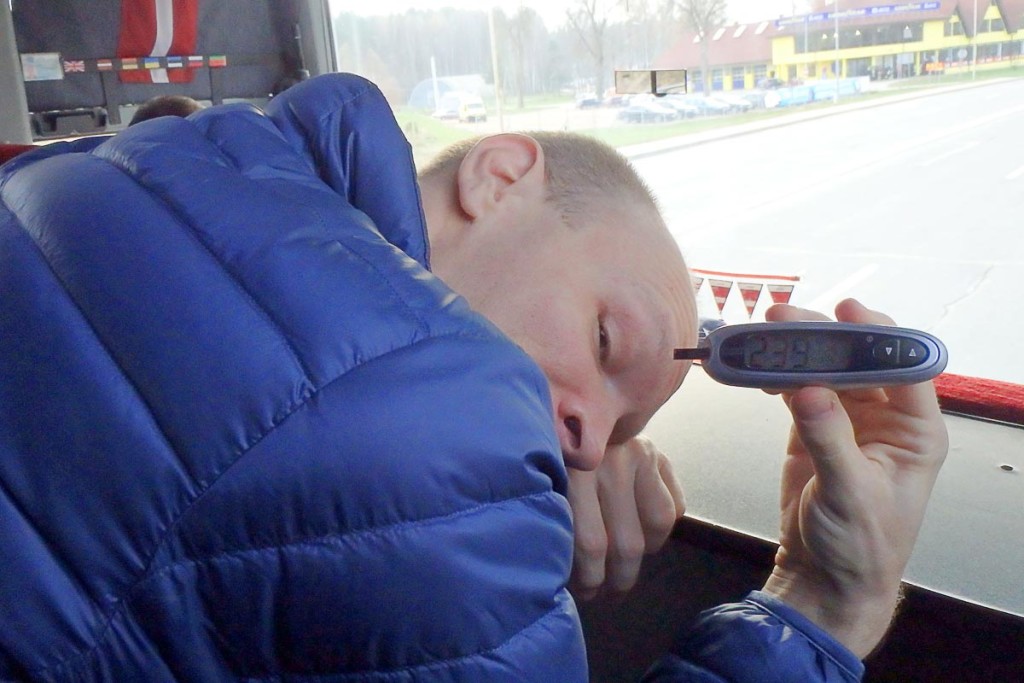
Disappointing. But I’d rather be 239 on a bus in Latvia than while working in an office.
Have you been to Latvia?
I would love to hear your experiences traveling in Latvia, whether you have diabetes or not. What else did you see or eat? Any interesting stories from your time in this partially-Russian, partially-Scandinavian, all-Baltic country?
There is no other country on Earth quite like Latvia. If you’ve been there, tell me your thoughts on it. If you haven’t – go!
Read more about my travels in Latvia
Come along on the adventure! Follow detailed travelogues about the wondrous sights, fascinating people, and varied diabetes experiences I encountered as a traveling T1D in Latvia:
Day 11: Valka, A Town Split By The Estonia-Latvia Border
Day 12: Overcast Bus Ride To Rīga, Latvia
Day 13: Curious World Of Rīga, Latvia's Old Town
Day 14: Lively Bus Ride To Daugavpils, Latvia
Day 15: Soviet Trams And Old Fortress In Daugavpils, Latvia
Day 16: By Bus Across The Border To Vilnius, Lithuania
Thanks for reading. Suggested:
- Share:
- Read: Tips for traveling to Estonia with diabetes
- Join: Free email newsletter (info and early video access)
- Support: Patreon (much earlier video access and other perks)

Support independent travel content
You can support my work via Patreon. Get early links to new videos, shout-outs in my videos, and other perks for as little as $1/month.
Your support helps me make more videos and bring you travels from interesting and lesser-known places. Join us! See details, perks, and support tiers at patreon.com/t1dwanderer. Thanks!
Want more? Get the free newsletter
Join us! Sign up to my email newsletter to receive updates, behind-the-scenes info,
and early links to my new YouTube videos before everyone else
